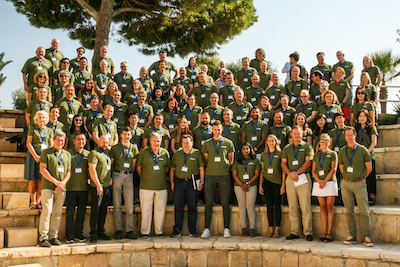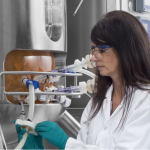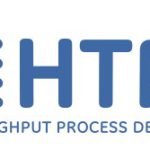
Since the first meeting in 1999, the PPB forum has established itself as the key international forum for the plasma manufacturing industry – read our report for the highlights of the 2022 conference.
Report from the 12th Plasma Product Biotechnology Conference
Plasma fractionation in Ukraine, lack of regulatory harmonization between EU and US, and cow plasma were three of the most memorable and top voted moments from the 12th Plasma Product Biotechnology (PPB) conference.
Since the first meeting in 1999, the PPB has established itself as the key international forum for presentations and discussions surrounding topics relevant to the plasma manufacturing industry. After a prolonged break due to the Covid-19 pandemic, there was a great appetite to meet again and discuss the latest developments of importance to the industry. The 12th PPB conference, held in November 2022, was co-organized by Cytiva, Takeda and CSL Behring and held in Limassol, Cyprus. The meeting attracted close to one hundred delegates from 19 countries with representatives from 33 businesses and institutions, including all the major global plasma fractionation companies.
Plasma Fractionation in Ukraine
Biopharma Plasma’s CEO, Dr. Kostiantyn Yefymenko from Ukraine, presented an inspiring presentation on the construction and operation of the company’s plasma fractionation plant as well as the development of public and private plasma collection centers. With moderate investment Biopharma Plasma have constructed a fractionation facility to process up to one million liters of plasma plus eight modern plasma collection centers. Most impressively, they have been able to, with support from the international plasma community and several global companies, keep both the fractionation and the collection running during the ongoing war in Ukraine. Due to the circumstances, Biopharma has had to take on many non-standard operations such as construction of bomb shelters for workers and plasma donors and ensuring uninterrupted supply of electricity during extremely challenging times.
Cow Plasma
The conference started with the session “Advancing plasma therapeutics from early research to clinical trials” and two of the presentations in the session was coming from SAb Therapeutics. Their COO Christoph Bausch presented the DiversitAb™ platform, which, according to Bausch, is advancing a new class of fully humanized, highly potent polyclonal antibodies without the need for human serum, as they are based on bovine plasma from transchromosomic cows. Despite the unusual raw material, there is a well-established and understood regulatory pathway through FDA-CBER. SAb Therapeutics has several projects in the pipeline, spanning from Phase 1 to Phase 3 across three indications. This first session at the PPB meeting also included two “next generation” presentations; one from CSL Behring on novel next generation Fc receptor–targeting biologics for treatment of autoimmune diseases, and one from ViruSure on next generation sequencing as a powerful tool for adventitious virus testing.
US and EU Regulatory Considerations
To cover safety, quality and regulatory aspects of plasma fractionation, the PPB conference had organized a panel discussion with subject matter experts within the field. One of them, Dr. Dorothy Scott, FDA’s Branch Chief of the Plasma Derivatives Branch, discussed the challenges on plasma supply and during the Covid-19 pandemic, which forced new regulatory guidance to be applied. One of the consequences during the lockdown beginning in 2020 was an acute decline in plasma collection, due to donors reluctant to leave their homes, plus also negative effects from the alterations to centers needed to accommodate social distancing and other safety measures. Even after the availability of new vaccines and relaxed restrictions, the plasma donations did not return to pre-pandemic levels. Hence, FDA revised recommendations for certain donor deferrals based on evolving science. With increased knowledge that implemented control strategies, as well as the manufacturing processes, showing no risk of prion contamination, a number of vCJD-related donor deferrals could be removed.
On a related topic, Dominika Misztela, Senior Director for Regulatory Policy Europe at PPTA, discussed advances and ongoing regulatory policy challenges for plasma fractionators. There is a significant imbalance of plasma collection for plasma derived medicinal products (PDMP), since US collects 65% of world’s plasma. And in EU only four countries (AT, CZ, DE, and HU) contribute to 55% of total plasma for PDMP manufacturing collected in the region. The Covid 19-pandemic highlighted the plasma collection imbalance and the increased EU dependency on US plasma. Differences in regulatory provisions limit global availability of plasma, and unilateral changes to regulatory provisions – such as the changes made by FDA during the pandemic – have significant global impact for plasma fractionators as well as patients. Hence, PPTA stressed the importance of science based and harmonized regulatory guidelines, and Dominika presented several examples of discrepancies and inconsistencies.
Kedrion’s Director of North America Logistics, Saleh Yusuf further emphasized the supply chain challenges and how increased lead times are impacting patients worldwide. Yusuf informed that on average it takes more than two hundred days from plasma collection to delivery of the finished product for distribution. The cycle time for plasma collected from a center to fractionation can range from 7 to 19 months.
Mechanistic Modeling
A key role for the conference is of course to present and share how modern technologies can improve efficiency and robustness of plasma fractionation. Takeda’s Paul Sylvain presented a collaboration with Cytiva around mechanistic modeling and a model-based characterization of a chromatographic process. In this case study a normal DoE approach was deemed too challenging due to the high number of different starting materials resulting in an extremely high number of experiments. Such limitations were eliminated by a mechanistic modeling approach based on the GoSilico Chromatography Modeling Software. The model output was a prediction of yield and purification rate, and the input included feed flowrate, conductivity, column loading, and total protein concentration. One of the conclusions from the study was that with just six calibration runs, the model could predict the evolution of yield and purity for different starting materials. The general trend was considered more interesting than specific values predicted, as scale-up and variability of analytical methods were not considered.
Another aspect of technical development that gained interest during the conference was work presented by Richard Weidemann at CSL Behring. He presented several insights into the complexity of plasma product manufacturing processes. In the strive to continuously look for innovation and process improvement in manufacturing, CSL have initiated a Global Base Fractionation Program. The program is focused on design and construction of new, standardized, and sustainable base fractionation facilities in Australia and Germany using optimized manufacturing processes and the latest technology with high automation. Important to note, is that the validation of the program is designed to achieve flexibility for use of the intermediates in manufacturing facilities at all CSL Behring sites.
The Future
The conference ended with a forward-looking session to address global trends in the plasma product market. From the presentations it can be concluded that the market has both a bright future with an increasing demand, but also that there are challenges ahead. On top of the mentioned plasma supply issues and lack of harmonization in the regulatory framework, there is the risk that production costs will increase with the electricity prices, inflation, and higher interest rates. Other challenges mentioned were finding qualified personnel, political instability, and stricter environmental requirements. It was the consensus that immunoglobulins will remain as the key driver for plasma fractionation market, and even if alternative therapies are getting stronger, they will not totally replace IVIG (intravenous immunoglobulin) and SCIG (subcutaneous immunoglobulin) for the time being.
The feedback from the 12th Plasma Product Biotechnology meeting was overall incredibly positive with 64% of survey respondents classing the meeting as ‘Excellent’ and remaining respondents classified it as ‘Good’. 100% of respondents were also looking forward to a new meeting in2024. When questioned on what other areas relevant to plasma biotherapeutics they would like to see, some responses given were:
· Sustainability
· Artificial Intelligence (AI)
· Process Analytical Tools (PAT)
· Analytical perspectives
· Epidemiological updates on virus infections
Considering that all PPB meetings have taken place on islands, the main remaining question at the end of the conference was which island will be visited next time?





